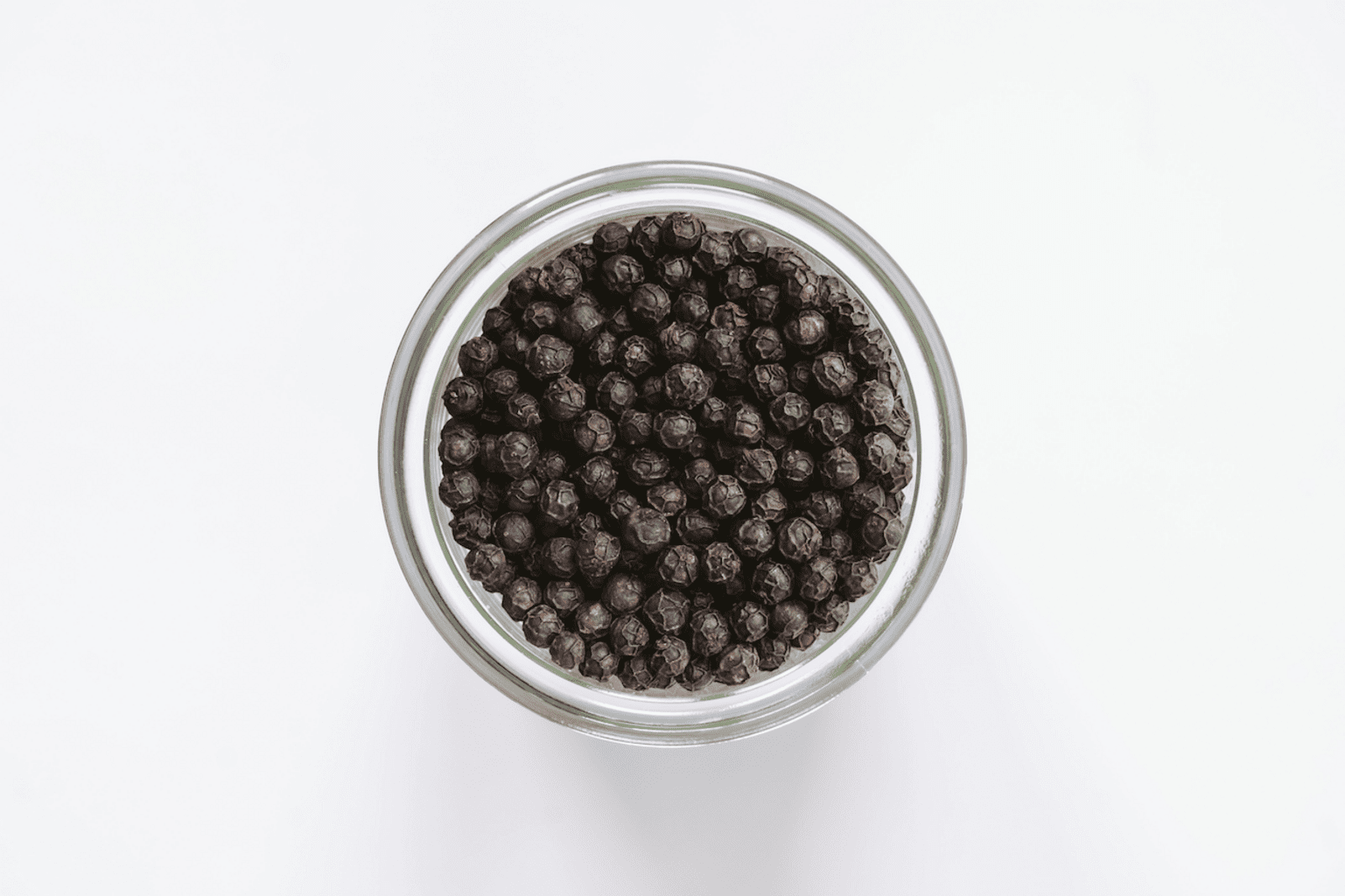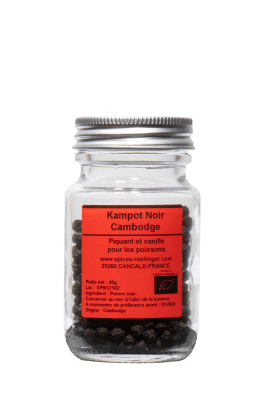Kampot Black Pepper
Ingredients: Black Kampot pepper, from organic farming
Spicy with a hint of vanilla. Use to season fish.
-
Allergens
Absent, except for cross-contamination.
May contain traces of sesame, celery, mustard, soy. - Origin Cambodge
- Storage / Use In a cool, dark, dry place
€200 / kg
€146 / kg
Olivier Rœllinger's words
The Kampot region of Cambodia lies between the Dâmrei Mountains and the Gulf of Siam.
The pepper produced there since the 19th century tastes of the rain and the sea. Kampot Black Pepper is an intense, full-bodied pepper that is particularly good at enhancing the natural flavors of fresh fish.
The pepper produced there since the 19th century tastes of the rain and the sea. Kampot Black Pepper is an intense, full-bodied pepper that is particularly good at enhancing the natural flavors of fresh fish.
Story
We have chosen to collaborate with two small plantations in Kampot. Both have Protected Geographic Indication (PGI) status which ensures they follow specific harvesting and production guidelines.
Cambodian pepper has been renowned since the time of the Khmer Empire. It can be found mentioned in ancient and medieval texts including the travel journals of Chinese explorer Zhou Daguan in the 13th century.
Cambodian pepper's prestige captured the imagination and the palates of explorers right up to the 19th century, when the Dutch army arrived to fight the Aceh War in Indonesia. The Sultan of Aceh ordered all pepper plants burned to prevent to prevent the Dutch from plundering the gustative treasure. At the time, some of the pepper production was moved to the Kampot region in Cambodia.
By the end of the 19th century, French colonists had expanded the pepper trade and increased production to nearly 8,000 tons per year.
The quality of the pepper produced in Kampot continued to improve over the years until the Khmer Rouge came into power in 1975 and replaced pepper production with a rice monoculture.
For the next 30 years, pepper production all but disappeared. It wasn't until the end of the 20th century that growers on small family farms began to cultivate Kampot pepper once more.
Cambodian pepper has been renowned since the time of the Khmer Empire. It can be found mentioned in ancient and medieval texts including the travel journals of Chinese explorer Zhou Daguan in the 13th century.
Cambodian pepper's prestige captured the imagination and the palates of explorers right up to the 19th century, when the Dutch army arrived to fight the Aceh War in Indonesia. The Sultan of Aceh ordered all pepper plants burned to prevent to prevent the Dutch from plundering the gustative treasure. At the time, some of the pepper production was moved to the Kampot region in Cambodia.
By the end of the 19th century, French colonists had expanded the pepper trade and increased production to nearly 8,000 tons per year.
The quality of the pepper produced in Kampot continued to improve over the years until the Khmer Rouge came into power in 1975 and replaced pepper production with a rice monoculture.
For the next 30 years, pepper production all but disappeared. It wasn't until the end of the 20th century that growers on small family farms began to cultivate Kampot pepper once more.




